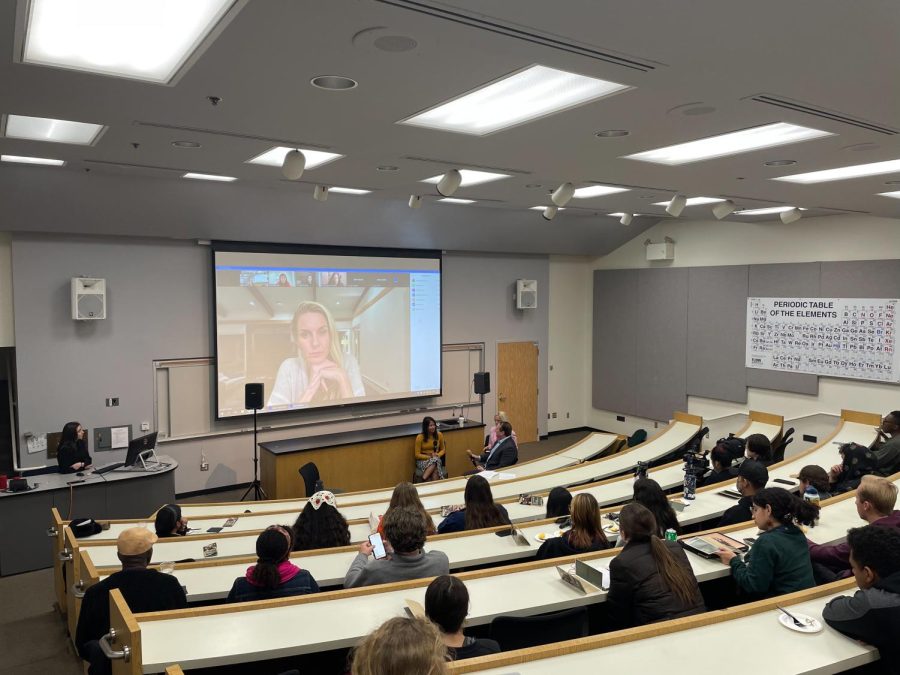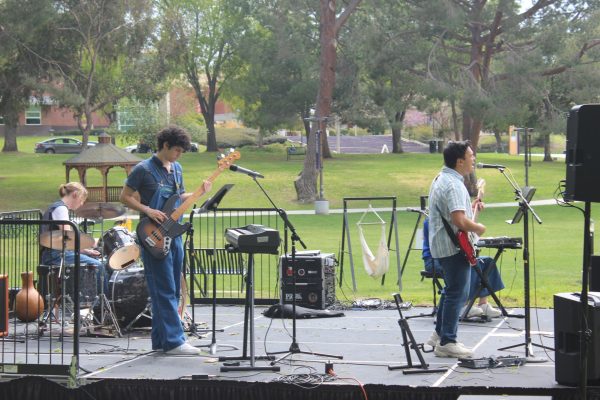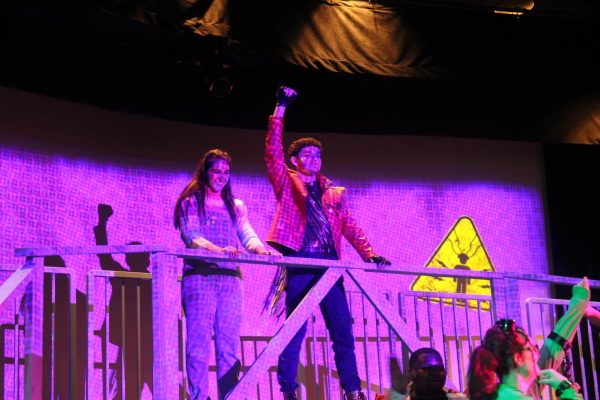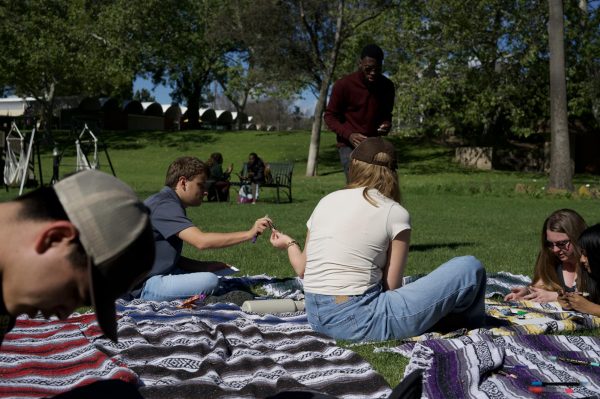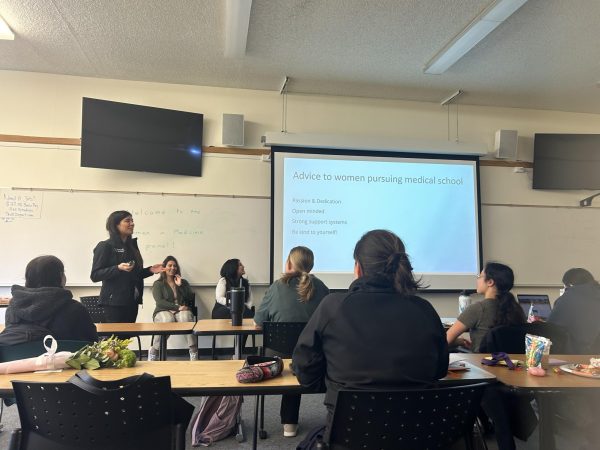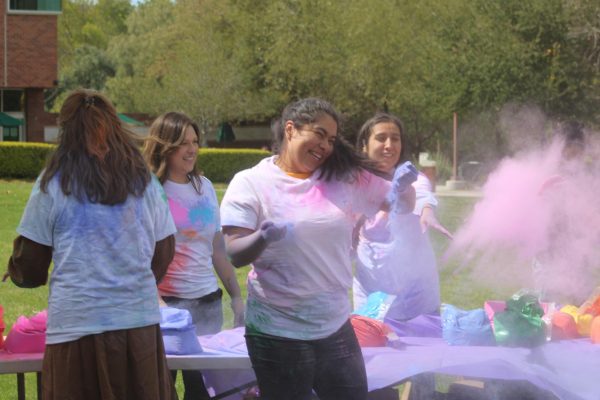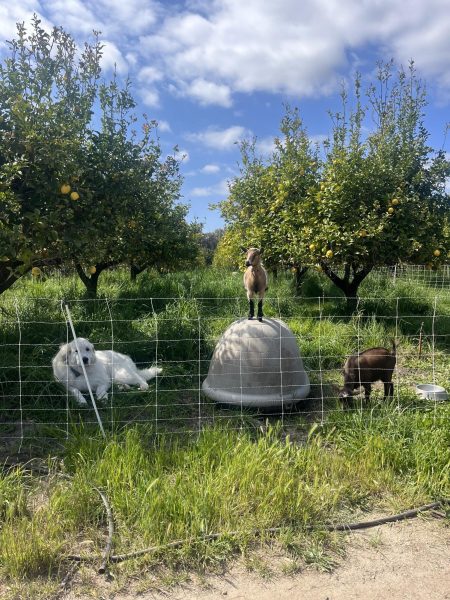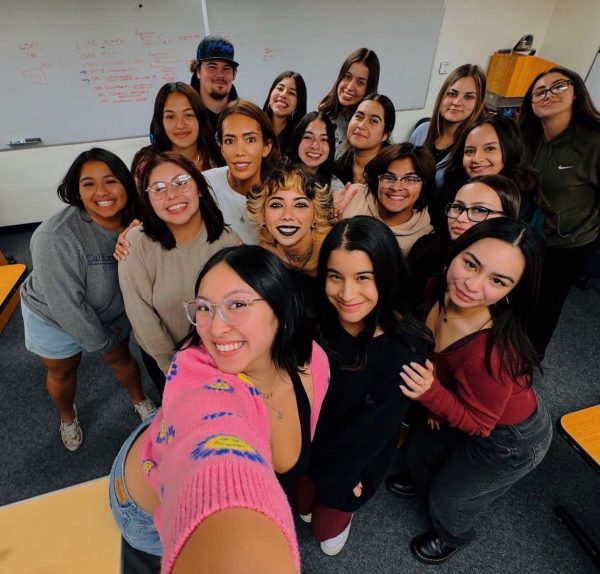Women in Film Summit advocates for more diversity within industry
The two-day Women in Film Summit was held in Richter Hall, and featured a variety of women who work in various areas of the film industry, including producers, showrunners, writers and more.
March 13, 2023
To celebrate Women’s History Month, the Film and Television Department brought together women in the film industry to discuss the advancements in the industry and the needed changes for women and other minority groups.
The two-day Women in Film Summit, held in Richter Hall, was also sponsored by the Sarah W. Heath Center for Equality and Justice with moderators John Fitch III, associate professor and director of the Cal Lutheran Film and Television Program, and Caroline Heldman, executive director of The Representation Project at Occidental College.
“I would love to pump up Professor Fitch because this sort of thing does not occur very often. To have such a stellar lineup of experts focused on the subject for two days,” Heldman said. “To have it be so diverse in terms of race, age and where they are in the industry. It’s impressive and a unique opportunity for students to learn from experts in the industry.”
Val Cheung, Munika Lay, Beth Mickle, Christina Lee, Naomi Beaty, Shannon Swanson, Kathleen Tarr, Nsenga K. Burton and Carmen Marrón, all with different backgrounds and experiences, were panelists for this event on March 6 and 7.
Swanson, a production coordinator who is known for the Academy Award-winning film “Everything Everywhere All at Once,” said that in the modern day, diverse candidates are cast, yet do not receive an opportunity due to lack of experience.
“Someone will say they want to see diverse candidates, this happens a lot, a producer will tell me I really want to see diverse candidates,” Swanson said. “So I will look for diverse candidates… I bring them people and they look at their resumes and they find that they haven’t worked on a cool hip indie movie because in their mind they are making this. They won’t hire people who don’t have this on their resume.”
Lee, a producer, writer and showrunner at Warner Bros. Television Studios, said that, at the beginning of her career, she viewed the male gender as a competition in which she could not win. However, in the present day, she said she now sees that she is equally qualified as any other person, regardless of gender or background.
Marrón, a director, said that having a diverse crew is also an essential factor when filming a diverse movie as it will make the actors feel comfortable. Yet, sometimes, due to economic factors, this possibility is not granted.
Marrón said that with social media, the large following of social media influencers has closed doors for unknown talents. As a casting director, Marrón said she struggles to find a place for all new actors. A large social media following creates an advantage that has never been present in previous years. Marrón said the influence that these new stars can have has resulted in pressure for directors or film companies to cast these artists in comparison to unknown actors.
Marrón said that, in her experience, one will always be a student in learning to adapt and maintaining an open mind and heart, which will lead to success in learning. She said that she always tries to adjust to every new situation.
“There has been less offensive, questionable and objective stuff being said in the workplace. I’ve had different experiences, starting about 10 years ago, where there was a shift in attitudes that made things feel more comfortable as a woman,” Beaty, a screenwriter, said.
Tarr, a Berkeley and Harvard Law School graduate and the lead panelist, spoke about her experiences in the industry during an interview.
“My first few jobs were great, but then it became clear how toxic and bad the industry is,” Tarr said. “As a civil rights attorney, I recognized where discrimination was happening rampantly… So I later transitioned to academia.”
Tarr said she faced many adversities in her career yet managed to continue from practicing law to acting. Tarr said she quickly began to book commercials and other roles.
“If you keep track of what you want to do, which always was for me, making the world something more humane for more people. Then you can add what makes me happy and doesn’t drain me too much to shift and keep your eye on your big goal,” Tarr said.
Burton said that a different career path is always an option if something does not feel fitting. Burton said for her, this meant going back to get her Ph.D. because the industry was not what she expected it to be.
“I made a decision back in 2001 that I wasn’t going to work in film anymore… When I moved to Los Angeles, the industry culture was a very difficult thing to navigate. It required a lot of you as a woman in general and a black woman specifically,” Burton said.
Lay, film producer and co-founder of the Center for Intersectional Media and Entertainment, discussed her personal adversities in the film industry.
“It took a lot of practice; the more you do something, the less uncomfortable it feels. The first few times, it’s going to feel horrible. After that, you’ll always be in your head about everything you have done differently. But the more and more you do it, the more routine it becomes and less extraordinary it becomes,” Lay said.
Burton said she studies race, class, gender, sexuality with film, media and technology and has extensively researched the changes in film throughout the years.
“Now there has been a lot of change, I would like to say that the change was not because people were benevolent but because people are much more educated,” Burton said. “The data suggests that there is so much more work to do. There have been great efforts but we have to make sure that the data drives the narrative around the change.”
This article was updated at 12:30 p.m. on March 17 to correct the misspelling of Carmen Marrón’s name. We regret this error.

